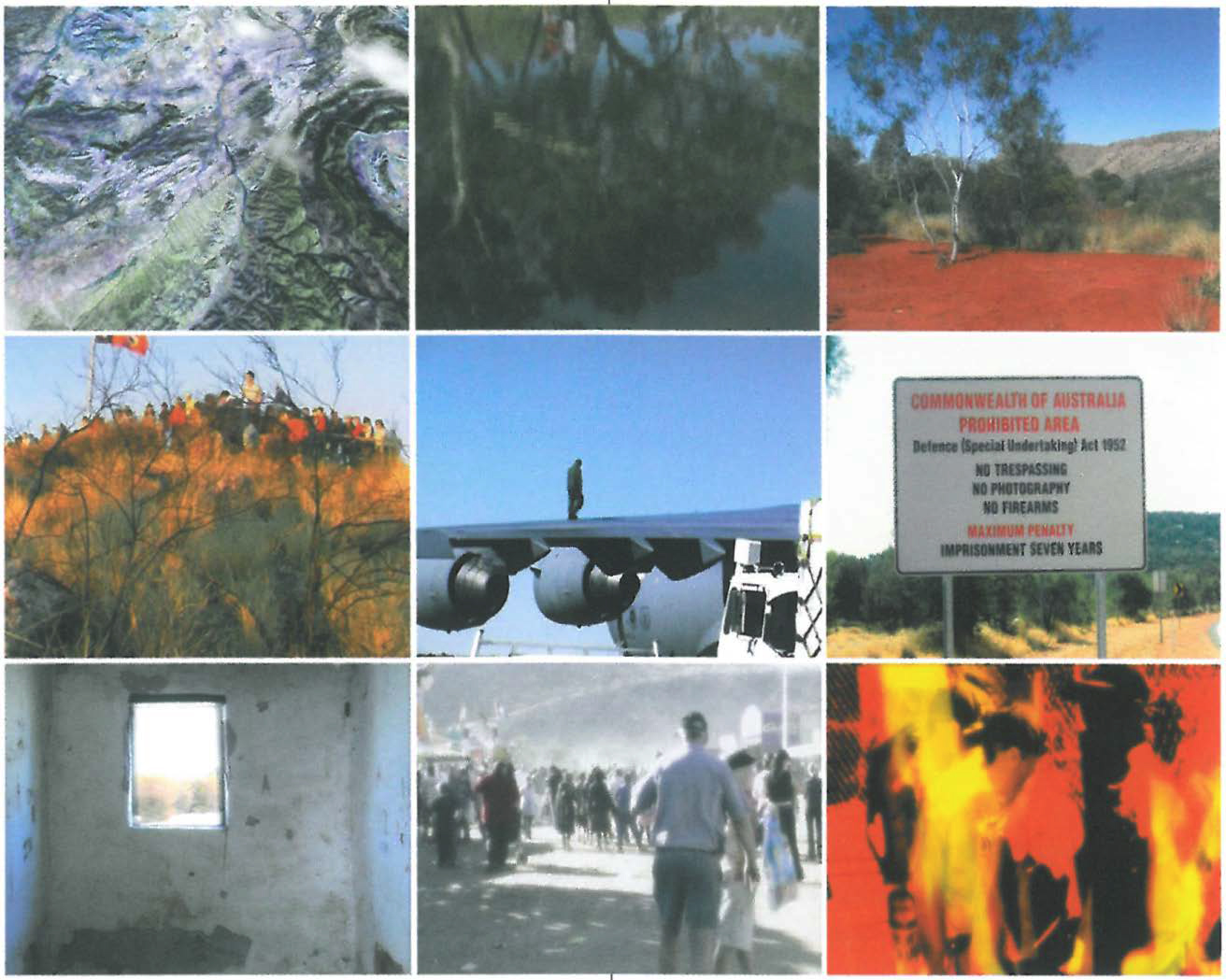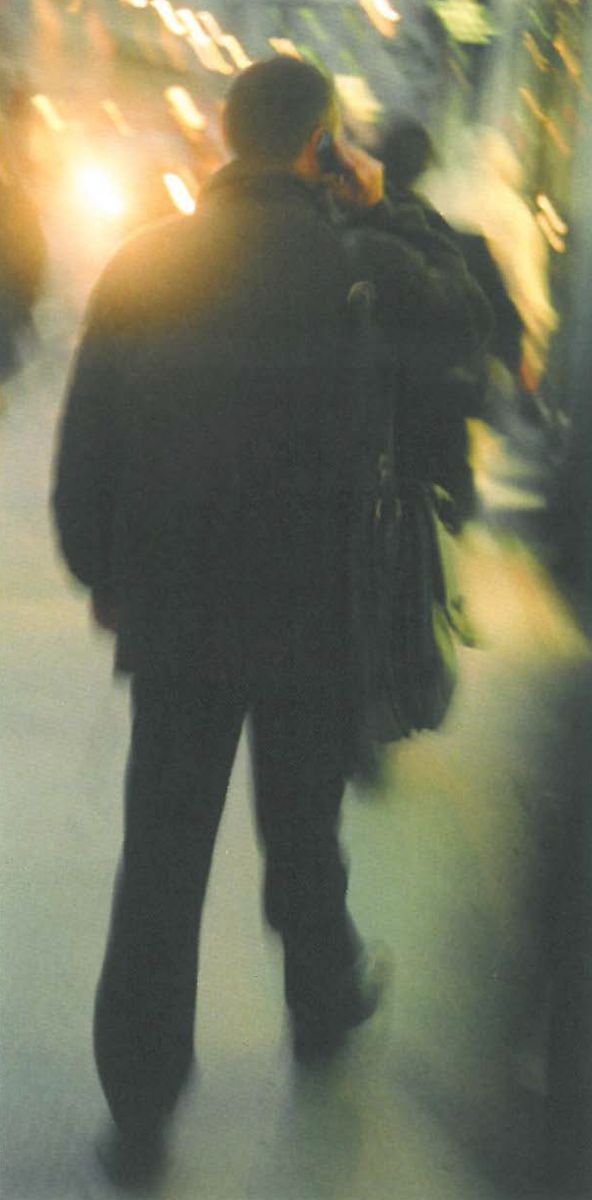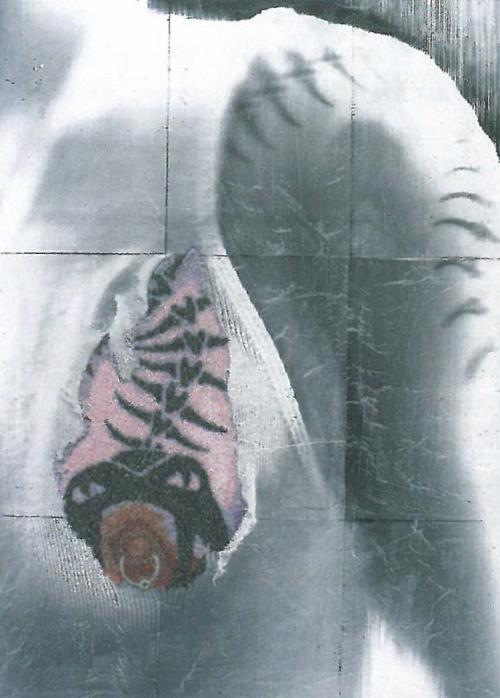
The plethora of ways of communicating through current technology appears to be ever increasing. Being virtually in many places at once means ultimately one can never feel alone when embracing this technology. How then can being so connected also make us elusive? The recent work of Merilyn Fairskye considers the parallel experience of being constantly connected, and a contrary yet simultaneous condition of disembodiment and intangibility.
Connected, a 25-minute digital video, is the manifestation of Fairskye's interest in the ubiquity of communication in which a collage of images and sounds centred upon the small town of Pine Gap in central Australia portrays a shadowy experience. As a base for US-Australia Joint Defence Space Research for global satellite technology and one of the largest ground control centres in the world, Pine Gap is a site of contrasts – an intense consolidation of communication technology within the remotest of landscapes.
The present political implications of this facility for Australia were highlighted after Connected was conceived, when the Australian Government announced Pine Gap as a centre for communications, intelligence-gathering and target identification for the then imminent war in Iraq. Photo reconnaissance and the interception of signals including mobile telephone, telex and the internet became key functions of its operations. Connected unveils Pine Gap mysteriously, tenuously connecting us with this place yet maintaining a sense of its secretive operations.
The manner in which Fairskye has created a sense of the town, its inhabitants and the landscape within which it is located, is fashioned upon the purpose of the site's very existence as a defence research facility. Connected conveys an ethereal state of connection through various images of the site in and around Pine Gap from differing points - air, space and ground level. Visibly discernible locations include the airport, the Stuart Highway, a tourist spot, road signs, a community gathering, as well as the extraordinary natural landscape formations which backdrop the town. Yet this place is revealed indirectly. Figures are reflected upside down in rippling water, locals are seen by their shadows, road trains and passenger buses hurtle along the Highway to destinations unknown and tourists linger casually. Voices are heard; faces largely unseen. Townsfolk gathered for an outdoor show are shown in reverse and slow motion in which the subtlety of slowness renders the scene's abnormality momentarily inconceivable.

This undefined connection with Pine Gap and its inhabitants is augmented in the accompanying soundscape; a compilation of contemporary anecdotes from locals about their affiliation with this site combined with recent news reports relating to Pine Gap's international political significance, sounds of trucks and planes, as well as the less discernible ambience of static, background noises and Morse Code.
Connections are imbedded throughout. Hearing a lone didgeridoo casts thoughts towards the connection of this location with its original indigenous inhabitants. A lone singer's proclamation to 'advance Australia fair' whilst locals move about backward, seems ironic.
Pine Gap is experienced as a synthesis of fragmented images and sounds leaving us aware that this is a place that retains its shroud of secrecy. The work's ability to seductively engage is testament to the artist's success in realising this state of being connected, and simultaneously disembodied.
Perhaps unintentionally yet somewhat fortuitously, the film's soundscape is audible throughout the gallery linking it with a series of decisively blurred images of anonymous city workers rushing away from us, mobile telephones firmly plastered to ears. These transparencies, which predate the digital video work, mark the artist's initial exploration of the fleeting experiences of communicating and follow on from her previous, Eye Contact series.
The transparent prints vibrate both literally and visually through their colour. The lightweight Duraclear medium is loosely suspended away from the wall, lending the images a weightless quality and allowing their life-size portrayals of office workers to gently waver in the circulating air. Their liberation from the gallery wall unexpectedly creates a dancing silhouette of shimmering light on the otherwise inanimate concrete floor.
The decisively out-of-focus, rushing plight of these workers conveys their hazy encounters of communicating. The familiarity of these scenes brings home the ethereal state of being present somewhere but linked elsewhere. To be constantly connected these days has become both expected of us and an accepted convention. And in spite of the variety of ways in which we can be connected, these experiences are also invariably obscure.












